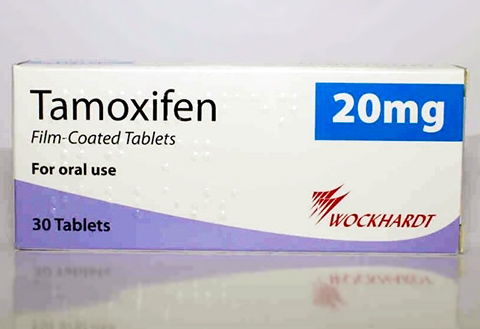Crohn’s disease
Crohn’s disease is an inflammatory bowel disease (IBD) that affects nearly 500,000 Americans, differs from ulcerative colitis in three ways. First, while the ulcers in ulcerative colitis affect only the inner layer of the colon, the inflammation in Crohn’s disease extends to the entire thickness of the tissue. Second, someone with Crohn’s disease has sections of healthy bowel between affected areas, while the inflammation in ulcerative colitis follows an unbroken line. Also, Crohn’s disease affects the entire GI tract – large and small intestines and sometimes even the stomach, esophagas and mouth – while ulcerative colitis is restricted to the colon as its name suggests.
The cause of Crohn’s disease is not known, but there is some evidence to suggest that it is genetic. About 25% of those with the condition have a relative with the same condition or with ulcerative colitis. Researchers are currently attempting to find a gene predisposing a person to Crohn’s disease. All forms of IBD are not stress-induced.
Symptoms
The symptoms of Crohn’s disease include diarrhea and abdominal pain, especially after eating. The discomfort usually centers on the right side or below the navel. Other symptoms include weight loss, fever, poor appetite, arthritis, skin problems, kidney stones, gallstones, abscesses, sores around the anal area and fistulas (openings where the bowel connects to the anus). It is also possible to suffer rectal bleeding that may be severe. Children with Crohn’s disease may be delayed in their growth and development.
Crohn’s disease can cause a number of complications. First of all, the inflammation causes the intestine to narrow from swelling and the production of scar tissue. This can cause an obstruction. Also, the sores in the intestine can spread to surrounding tissue, especially around the anus. Once the sores spread or tunnel, they are called fistulas. Fistulas can usually be treated with medication, but sometimes need surgery to correct them.
Diagnosis
Crohn’s disease is diagnosed by a series of different tests.
- Blood tests may show anemia, indicating internal bleeding, or an elevated white blood cell count, indicating inflammation.
- A barium enema x-ray is useful to show any ulcers in the intestine. In this test, the colon is filled by means of an enema with a chalky white liquid called barium which allows doctors to see the colon in an x-ray.
- Also, an endoscopy (such as colonoscopy or sigmoidoscopy) may be necessary. This procedure will allow a doctor to view the extent of the inflammation and take a biopsy to rule out other intestinal diseases that have similar symptoms, such as ulcerative colitis.
- Stool samples.
Treatment
Crohn’s disease can usually be treated with medication. The drugs are similar those used to treat ulcerative colitis. The first step is with drugs containing mesalamine to control inflammation. If satisfactory results are not seen, the patient is treated with drugs called 5-ASA agents. This is a combination of sulfonamide, sulfapyridine and salicylate, and can be given orally or rectally. These medications also control inflammation and thereby greatly lessen the symptoms in mild to moderate cases. Possible side effects include nausea, heartburn, diarrhea and vomiting.
Should a patient fail to respond to treatment with 5-ASA agents, the next step is corticosteroids to reduce inflammations such as
- prednisone,
- hydrocortisone or
- budesonide
Side effects of corticosteroids include weight gain, high blood pressure, acne and/or facial hair. In severe cases, a person may be treated with anti-immune therapy drugs such as azathioprine to control the symptoms. Anti-immune drugs can increase a person’s susceptibility to infection, however. On the other hand, treating a patient with a combination of anti-immune medications and corticosteroids is often very effective.
Surgery
In some cases, it may be necessary to perform surgery when medication can no longer control the symptoms. A bowel resection may need to be performed, where the diseased section of the colon is removed and the two healthy ends are reconnected. In severe cases, the colon may need to be completely removed and one of the following options exercised:
- Brooke ileostomy. In this surgery, the doctor makes a small hole in the patient’s side and attaches the ileum, or end of the small intestine, to it. An external pouch is worn to collect waste and emptied as needed.
- Continent ileostomy. In this surgery, rather than an external pouch, an internal pouch is created inside the abdomen and the patient empties it by inserting a tube through a leakproof opening in his/her side. This option carries with it the possibility of complications such as inflammation of the internal pouch or problems with the leakproof opening.
- Ileoanal anastomosis. Also known as a “pull-through operation,” this procedure leaves part of the rectum in place and attaches the ileum to it. This option allows a person to have bowel movements as they did before, although they might be more frequent and looser. This surgery also carries the possible side effect of an inflamed pouch.
Although diet alone cannot control Crohn’s disease, patients may be more comfortable eating a low-roughage diet and avoiding spicy foods, high-fiber foods and sometimes avoiding lactose. However, because this disease causes diarrhea and a poor appetite , it is essential to eat a well-balanced diet to maintain proper levels of nutrition. Avoiding stimulants such as coffee or chocolate, identifying other food “triggers,” and abstaining from smoking can also help prevent symptoms from recurring.
Nutritional supplements may be ordered when adequate amounts of nutrients cannot be absorbed by the bowel, especially for children with the condition. Surgery is recommended when complications such as fistulas or obstructions are present or in patients with disease that does not respond to medications.






